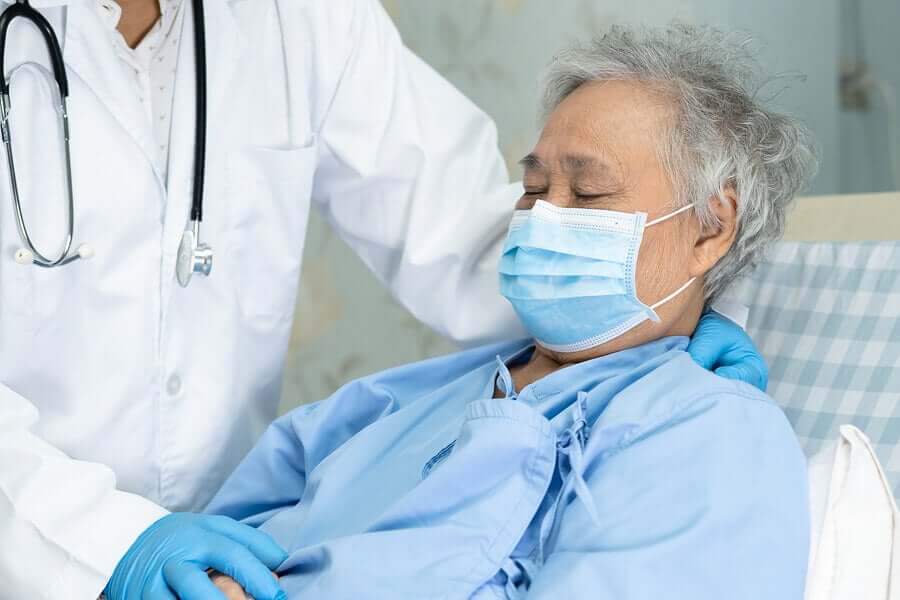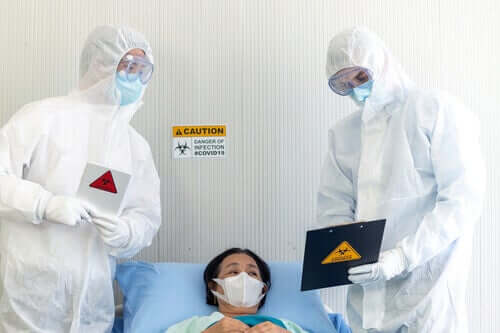What Are the Main After-Effects of Coronavirus?

The COVID-19 pandemic continues. However, thankfully some countries are lifting restrictions because they have begun to see their infection curve drop. However, specialists are now waiting for the after-effects of coronavirus to appear.
Like any disease of this magnitude, and when we consider the number of deaths and the number of patients, it’s logical to expect medium and long-term consequences. Experts are still evaluating potential future complications. However, some research is already showing us what to expect.
Considering the future consequences of the coronavirus pandemic is very important for public health. This could well include the saturation of the healthcare systems as a result of the after-effects that may appear progressively in the population.
The respiratory system is a major focus of attention, as COVID-19 pneumonia has been the predominant condition. However, neuromuscular disorders and psychological disturbances are no less relevant.
There is talk of different waves of the pandemic:
- Wave one: The contagions we’ve been experiencing that led to confinement and quarantine.
- The second wave is the immediate consequences of COVID-19 on the bodies of affected people.
- Wave three: The other illnesses and diseases that were left unattended by the emergency.
- The fourth wave is the one that may emerge as behavioral disorders in the population.
Pulmonary fibrosis: A consequence of coronavirus
Due to the urgency of the situation, there has been considerable use of artificial respirators in severely ill COVID-19 patients. As a result of this extreme but necessary treatment, there are now several after-effects arising from the use of these devices.
This is not a minor consideration, especially if we add in the patients who were in intensive care with the effects of pulmonary fibrosis. As a result, they could see their respiratory capacity diminished for many years.
Pulmonary fibrosis is a scarring of the lung tissue that replaces alveoli with non-breathing fibers. Needless to say, the lungs become inefficient under these conditions.
Scientists link these after-effects of coronavirus to the cytokine storm, which is common in those who die of COVID-19. In patients who have recovered, the scars remain on their organs as a result of this attack on their immune system.
This is why doctors are warning about patients who already had autoimmune diseases. People with rheumatoid arthritis who suffered from COVID-19 may enter a process of chronic and recurrent inflammation from the cytokine storm they experienced.

Read on: The Cytokine Storm and the Coronavirus
Muscle weakness after long hospitalizations
For several years now, post-ICU syndrome has occurred in many patients after hospitalization in an Intensive Care Unit. These are sequelae that patients suffer after long stays in these units, whatever the cause.
So, knowing about these previous cases, we know that there will be post-ICU syndrome as part of the after-effects of coronavirus. This includes loss of muscle mass in the limbs and exhaustion when performing daily activities, such as walking or eating.
Having been bedridden and immobile for a long time, the muscles tend to atrophy. When the patient returns home, his or her body isn’t the same. The patient probably weighs less and the muscle tone is minimal.
When it comes to COVID-19, we need to add the possibility of its influence on the neuromuscular junction. So, in addition to the post-ICU syndrome, there could be neuromuscular disorders caused by SARS-CoV-2.
Find out more: How Coronavirus Infects Cells in the Lungs
Psychological after-effects of coronavirus

The psychological after-effects of coronavirus are varied and can be approached from different angles. They are suffered by those who were severely ill with COVID-19, those who have gone through stressful home confinement experiences, and also by health personnel.
Patients with COVID-19 are – and have been – exposed to more intense fear than those with other diseases. The saturation of information in the media and the daily death count has created added stress and strain.
Today, there’s talk of the possibility of an increase in post-traumatic stress cases in those who survived the disease. They may be more afraid to go out onto the street, to enter crowded places, and to travel far from their homes.
We should also stress here that many of these people may have already suffered from anxiety disorders, distress, or depression. In these people, it’s quite logical to expect an increase in the symptoms of these anxiety-based disorders.
Finally, healthcare workers are facing exhaustion that may easily turn into burnout syndrome. We will have doctors and nurses who are physically and mentally exhausted. They’ve been suffering from increased stress, and some may even be afraid to go to work and afraid of similar situations in the future.
The after-effects of coronavirus will leave their mark on society
A pandemic of this kind will always have a tremendous effect on society, and not only because of the current contagion. All of society will suffer from the after-effects of coronavirus, even those who weren’t infected. These effects may last for a while.
However, we human beings are very resilient. It’s up to us to learn to live with the aftermath and try to get back to a new, healthier normal as soon as possible.
This text is provided for informational purposes only and does not replace consultation with a professional. If in doubt, consult your specialist.








